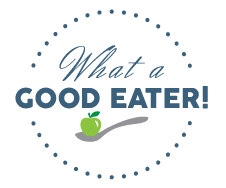First Finger Foods for Baby

Weaning your baby away from purees can be a bit intimidating. As a parent, you may find yourself wondering: Will my baby choke? Is she ready to handle finger foods? How do I know when she’s ready? And what foods do I even start feeding her??
As with most everything, each child is ready for finger foods at different ages and stages. This depends on a number of factors, including your baby’s number of teeth, chewing capabilities, development, etc.
Here are a few signs that your baby MIGHT be ready to feed herself:
- She grabs the spoon from you
- She reaches for the bowl of baby food, wanting to dip her fingers in it and feed herself
- She’s been comfortably eating chunkier purees or mashed food with texture without any issues
- Your baby is between 8 to 10-months-old (this is just a general window–babies can be ready sooner or later than this age)
We like to think of first finger foods for baby as a series of phases, and we’ve broken them down for you below.
Phase 1: Soft and Safe Foods
Start with foods that are very soft and safe to avoid choking hazards, and see how your baby does. In terms of food size, start very small to be on the safe side. The food should be large enough for your baby to pick up with her hands, but small enough to ensure safety and avoid choking hazards. A few examples of food in this category may be:
- Diced banana
- Diced cheese (sliced paper thin)
- Diced butternut squash (try it baked)
- Diced sweet potato (try it baked)
- Diced clementines or oranges
- Diced zucchini or squash (try it baked or sautéed)
- Diced cooked carrots (try steamed or roasted)
Phase 2: Foods with Texture
If after a few weeks, your baby is very comfortable eating foods in phase 1 and she’s getting the hang of things with minimal coughing/choking scares, you can try introducing foods with slightly more texture. A few examples of food in this category may be:
- Bite size pieces of scrambled or poached egg
- Diced strawberry
- Diced kiwi
- Small pieces of tender chicken or beef (try slow cooking meats to achieve tenderness)
- Small pieces of ground chicken, turkey, or beef
- Small pieces of tender fish (try wild caught salmon or a flaky, white fish)
Phase 3: Larger, WHOLE Foods
If after a few weeks, your baby is very comfortable eating foods in phase 2 and she’s getting the hang of things with minimal coughing/choking scares, you can try introducing larger, whole foods such as beans and whole fruit (which means less dicing for you!). A few examples of food in this category may be:
- Green peas
- Diced lima beans
- Black beans (cut in half if needed)
- Small chunks of meat (fish, beef, chicken, etc.)
- Diced blueberries
- Diced tomatoes
- Diced whole wheat pasta (try penne or fusilli for little hands!)
These are just a few examples to hopefully get you and your baby comfortable and on her way to eating finger foods. What bite size foods did you start feeding your children? Please tell us in the comments section!
If you enjoyed this post, sign up to receive our newsletter for other great ideas on feeding your baby, toddler, and family. Look out for our upcoming cookbook What a Good Eater! for baby & toddler recipes with healthy herbs and spices to add flavor and broaden your baby’s palette, expected April 2016.
- Is Your Baby Ready to Eat Solid Foods? What a Good Eater Podcast - July 23, 2018
- Useful Tips for Drama-Free Dinners: What a Good Eater Podcast - July 11, 2018
- Black Bean & Veggie Kiddie Quesadilla Recipe - June 22, 2018
- How To Get Your Kids to Try New Foods: What a Good Eater Podcast - June 12, 2018
- How To Ensure Success With Kids at Mealtime: What a Good Eater Podcast - June 12, 2018
- Easy Summer Smoothies - May 28, 2018
- 5 Ways to Serve Avocado to Kids - August 1, 2017
- Healthy Summer Snacks to Take To Go - June 27, 2017
- Portion Sizes for Kids - April 12, 2017
- 10 Healthy Snacks for a Young Toddler - February 27, 2017


+ There are no comments
Add yours